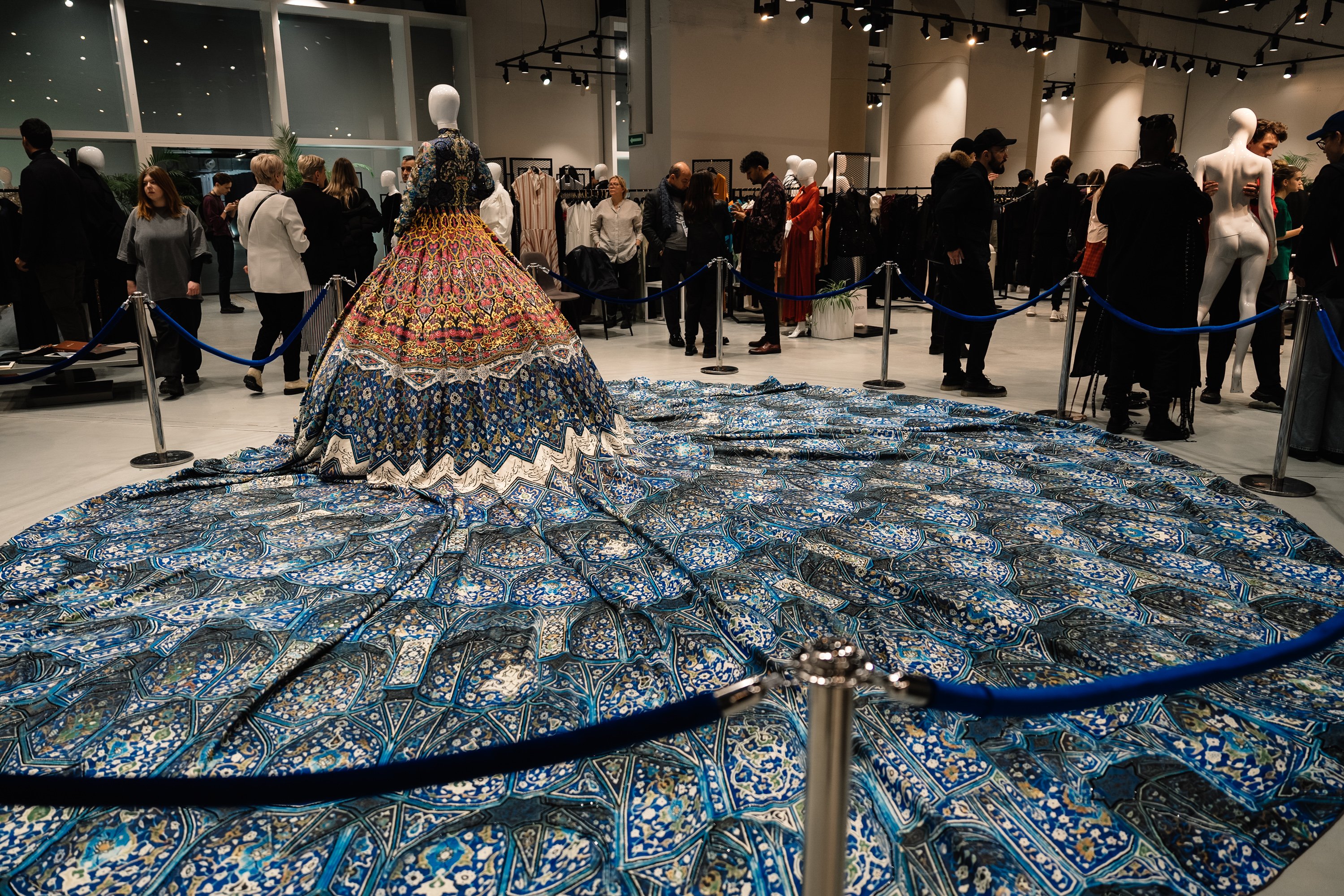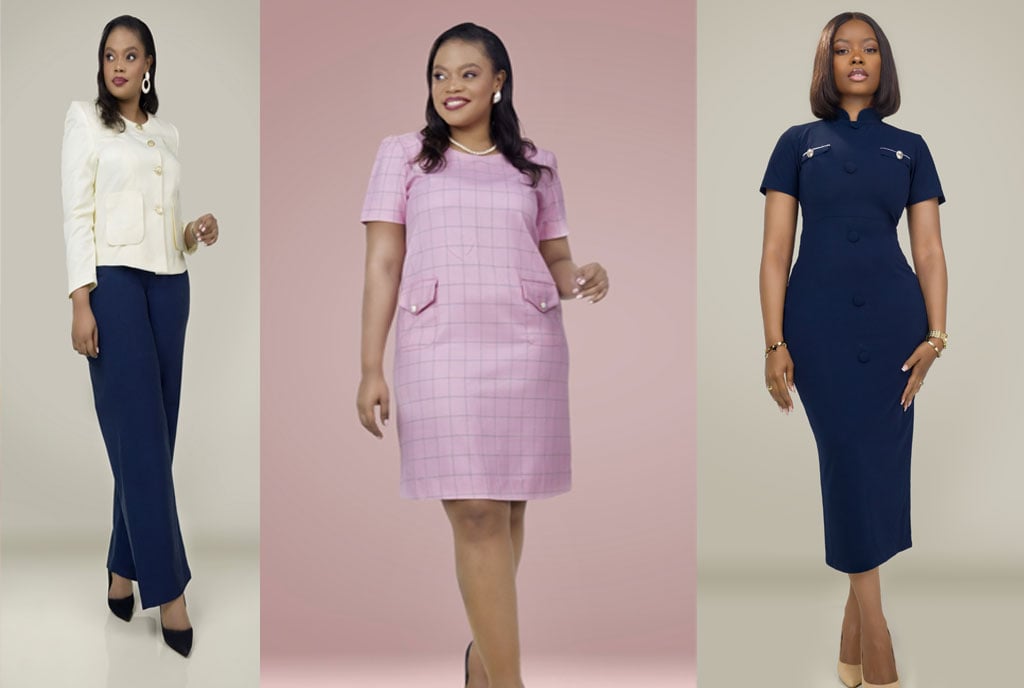Prime
BRICS + Fashion Summit: A spectacle of fashion, dialogue and culture

One of the show-stopping designs by Egyptian Haute Couture designer Hany El Behairy. Photos/Courtesy/BRICS+
What you need to know:
- FASHION MEETS CULTURE: Against the charming backdrop of Moscow, the inaugural BRICS+ Fashion Summit unfolded from November 28 to December 2, 2023, in Russia. This extraordinary event, featuring several business programmes, fashion exhibitions and showcases, thought-provoking discussions, and captivating excursions throughout Moscow, drew a diverse assembly of delegates and fashion enthusiasts from across the globe. As one of the many individuals representing Africa, Gloria Haguma found herself immersed in the snowy fascination of a week-long celebration that showcased the finest in global fashion.
Commencing with a series of engaging panel discussions at the Zaryadye Park Concert Hall, the BRICS+ Fashion Summit’s inaugural day set the tone for discussions centered on the foundation of a single market incorporating BRICS+ national brands.
Moderated by Russian-Georgian journalist and TV presenter Tina Kandelaki, the panel featured distinguished figures such as Italian film actress Ornela Muti, China Fashion Association’s Executive Chairman Yang Jian and Moscow Government’s Minister Alexey Fursin, who emphasised the importance of international collaboration, citing the success of Moscow Fashion Week in 2022 as the catalyst for bringing together global communities.
“Today’s forum is proof that the BRICS+ nations are ready to work together and also corporate with Russia and each other,” he added.
Joining the discussion, Cem Altan, a board member of the Istanbul Apparel Exporters Association, highlighted Turkey’s journey in cultivating top-notch designers through fashion schools and competitions.
“We have great fashion schools in Turkey; something that was unheard of 20 years ago, meaning the pioneer designers had to pave the way for themselves. But the new crop of designers we have can compete globally because they have received the right training and skills necessary,” he explained.
The country has also adopted the use of designer competitions in a move to promote and develop talent.
“A lot of the designers who take part in platforms such as the Istanbul Fashion Week have come from the Emerging Designers Competition, and this has helped propel a lot of Turkish designers onto the global stage,” Altan adds.
The panel, further exploring the democratisation of fashion, emphasised the pivotal role played by local brands in the global arena.
The second session of the discussions focused on the democratisation of fashion, how local brands get global visibility and how the BRICS+ countries can be a part of this process.
For this discussion, the panel hosted Senan Kamel Alwan (CEO of Baghdad Fashion Week) Tatyana Komissarova (a professor of Economics), Vitaly Stepanov (CEO of the Moscow Export Centre), Uma Rutanova (CEO and co-founder of Two Eagles) and Binod Singh, the managing Director at BRICS Institute.
This discussion majorly highlighted the need to find common ground and discuss the authenticity of the fashion industry.
Komissarova pointed out that the new fashion influence centres that are going to emerge can be well established locally and even though the consumer audience is conservative in Russia, they do react quickly and are very embracive of new trends and changes.
Stephanov of the Moscow Export Centre also pointed out that they have set up programmes that support local businesses when they get onto global markets, which is something that is still lacking as far as the fashion industry in Uganda and other parts of Africa is concerned.
Government involvement and support is something a lot of the industry players on the continent are yet to see, and yet this comes in handy in propelling designers and creatives onto global platforms such as the BRICS+ Summit.

Opera singer Makarov Valerywas a delight to watch at the gala dinner.
Entrepreneurship track and fashion showcases
Day two of the summit unfolded with a dedicated entrepreneurship track, featuring 11 panel discussions, a plenary session, and three TED Talks.
Addressing the significance of flagship stores in the fashion industry, speakers such as Alisa Boha emphasised the importance of personal interactions with customers. The discussions also touched on the growth strategies for fashion brands, with insights from Ilya Bulichev, founder and chief designer of BLVC.
The intersection of fashion and technology took centre stage, with South African designer David Tlale advocating for the balance between technological advancements and honing professional skills.
“I am old school and so while technology is great, it is also important to understand the skill and learn it. You cannot be a designer who relies on AI to generate designs for you. Take time to learn the skill, so you can do the work,” Tlale said.
Alexey Kulakov, who is the CMO of Lamoda, echoed this message, stating: “It is great, but it also has its limitations. While using AI may seem like the easier route, it should not replace your creativity and sense of time that you should be investing in building your brand.”
The TED Talk series added depth to the conversation, with Adama Ndiaye and Makeba Boateng shedding light on the decolonisation of fashion and the challenges of entering new markets, respectively.
Ndiaye, the founder of Dakar Fashion Week and the African Fashion Council shed more light on this. “Decolonisation of fashion and consumption culture, explaining that clothes were not only a fashion statement but also a historical testimony to our culture and heritage. Our traditions are passed on thanks to the design and production of clothes and all of it is an integral part of our communities,” she said.
Boateng, the founder of Fashion Forums Africa on the other hand described the African Fashion Market in detail, with all its achievements and shortcomings.
“Getting into new markets is a major challenge for many brands. Choosing the right market is of the essence because the size of the market and its conditions are important. The main motivation for international expansion is reaching out to new consumer groups and the opportunity to diversity market reach, penetration into new markets, higher revenues potential and growth opportunities,” she said.
Each day concluded with fashion showcases, where designers from around the world presented their latest creations. Despite the frigid weather, delegates showcased their street style and witnessed inspiring collections from global designers, including Juan Hernandez Daels, Arzu Kaprol, CHNNYU, Kunjina and a joint showcase of Indian designers.
For day one, Argentine-Belgian designer Juan Hernandez Daels, a graduate of the famous Royal Academy of Fine Arts in Antwerp who focuses on tailoring savoir-faire with continuous innovation presented his collection. The collection echoed his multicultural background which constitutes an enormous source of inspiration, as well as his unique way of telling stories with clothes in which he combines his Flemish heritage with his Argentinian upbringing.
Day 2 showcases included Turkish Designer Arzu Kaprol who held her showcase at the Parking Gallery of the Zaryadye Park. The designer is synonymous with playing with architectural shapes and experiments with models and materials. For this showcase, her collection was infused with a lot of leather details, semi-sheer fabrics, velvet and pleats.
The Chinese brand, CHNNYU, which was established in 2014 is an award-winning brand, whose BRICS+ Fashion Summit showcase focused on classic cuts, accentuated with trendy hues and prints. The showcase that was held at the State Historial Museum featured volatile feminine dresses with some sky prints, something that is synonymous with the brand’s modern classic touch.
Kunjina, a merging brand from Ethiopia opened up the showcases for Day 3, unveiling her new pastel collection that included suits, open-shoulder dresses and jumpsuits, with contrasting textures, but all brought together with the cinched waist detail that was achieved with the use of belts.
This was followed by a joint showcase of four Indian fashion designers, including Riteshkumar, Khanijo, Naushad Ali, and Shruti Sancheti. The showcase was held at a cultural heritage site, Pashkov’s House, which offered the perfect setting for the show, with models walking down the runway to live music by an Indian performer.

The writer in a jumpsuit by Ugandan designer Fatumah Asha.
Ready-to-wear pieces
The show opened with a menswear collection by Khanijo, Naushad Ali, Shruti Sancheti, whose collection offered ready-to-wear pieces and Riteshkumar, whose collection was a real reflection of Indian fashion. While the designers brought out their different and unique styles, pieces seamlessly merged into each other for their joint finale, with the rich scent of Indian fabrics filling the air and I could smell them from my front row seat. The other uniqueness of this showcase was the models’ feet that were applied with alta (a red dye), adding a unique touch to the showcase.
To climax the showcases of the summit were designers Aldrie Indrayana from Indonesia, Hany El Behairy Haute Couture from Egypt and David Tlale from South Africa.
Indrayana is known for her eco-friendly fashion and modifies second-hand items, sometimes turned in by the customers themselves, which she then reinvents into fresh new designs. Her collection featured a lot of dark shades and gothic elements. The collection was complimented with bold make-up looks and the models barefoot.
Hany El Behairy’s pieces, some of which I had had the privilege of seeing beforehand at the showroom, presented his very elaborate collection with models strutting down the runway in dresses layered with numerous crystals and feathers, very much exuding haute couture. The designer also paid homage to his native Egypt with one of the models donning a creation that was laid with luxurious stones, forming a portrait of Queen Nefertiti with a matching headdress, and jewellery.
The David Ttale showcase was the climax of the night and in true Tlale style, the models walked out in a parade at the start of the show, causing those present to think the show was over. However, they later walked on, one by one, allowing guests to get enough of the vibrantly printed pieces that were complimented with a black-themed collection. The looks were heavily layered and featured cuts and silhouettes that worked well with the various textures and prints. The women’s and men’s wear collections were intricately infused with lace, sequins, balloon sleeves and bows; all details that are synonymous with the designer’s creations.
The summit also featured showroom exhibitions by over 20 international and Russian designers, including Akhmadullina Dreams, CHAPURIN, VICTORIA ANDREYANOVA and many more. The diverse selection of designs showcased the richness and creativity of the global fashion landscape.
In addition to the intellectual and visual feast, guests were treated to the vibrant Moscow nightlife. Various parties and celebrations, including a cocktail party at Turandot Restaurant that featured Chinese DJ and Tech House producer Lizzy Wang as well as the BRICS+ Fashion Summit Gala Dinner at the Four Seasons Hotel, which provided a blend of cultural experiences and entertainment.
The BRICS+ Fashion Summit 2023 proved to be more than just a convergence of fashion; it was a global celebration of creativity, entrepreneurship, and cultural exchange, setting the stage for continued dialogues and collaborations in the dynamic world of fashion.




